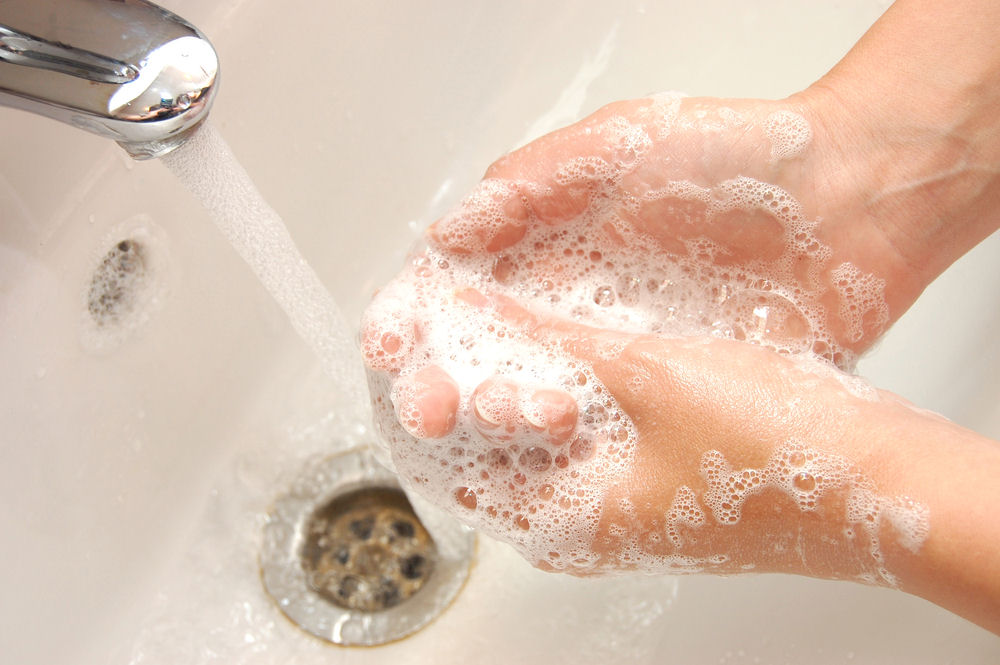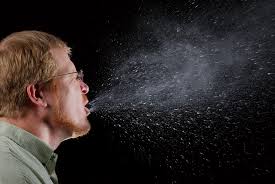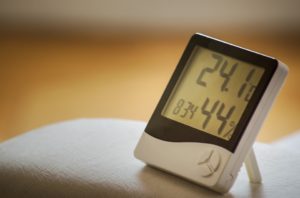
Photo from Shutterstock.
Starting a new exercise routine can be so challenging. Sometimes I put on workout clothes in the hopes that at some point during the day, I’ll build up the motivation to hit the gym and will already be dressed and ready to go. Finding the will to workout can be an even greater struggle for those with exercise-induced asthma. Individuals with exercise-induced asthma experience chest pain, fatigue, wheezing, coughing, and other breathing problems while exercising. About 70 to 90% of asthmatics are also affected by exercise-induced asthma, according to the U.S. National Library of Medicine. Researchers recently discovered that something as simple as taking a daily vitamin could greatly reduce symptoms of exercise-induced asthma. A new study in the British Medical Journal explained that those with exercise-induced asthma could benefit from taking vitamin C.
Researchers compared the results of 40 study participants that took 500 mg to 2 grams of vitamin C each day versus participants who took a placebo. Scientists looked at changes in FEV1 or “forced expiratory volume,” an indicator of the amount of air that can be forcibly exhaled in one second. Individuals that took vitamin C showed a 50% reduction in the drop of post-exercise FEV1 when compared to those that took the placebo. This result represents a vast improvement in lung function. Lead study author Dr. Harri Hemila suggests trying vitamin C if you have exercise-induced asthma since it could be an inexpensive way to help treat symptoms.
If you have exercise-induced asthma, talk to your doctor about how to develop an asthma treatment plan that will reduce your symptoms. Asthma inhalers, bronchodilators, and medication like albuterol have been known to help when taken about 10 minutes before exercising. Cold air and allergies can worsen symptoms, so you may benefit from moving your exercises indoors during the winter and peak allergy seasons. Take time to warm up and cool down so your lungs have time to adjust before and after you exercise. Exercises requiring short bursts of energy are often easier for those with exercise-induced asthma, so volleyball or walking are preferable to sports like running, soccer and basketball, which require more endurance. Swimming, another endurance sport, is an exception since the warm, damp air can make it easier to breathe.
Additional Resource:

















 Many asthma and allergy sufferers, especially those with hay fever, have been happy to learn that
Many asthma and allergy sufferers, especially those with hay fever, have been happy to learn that  Thunder doesn’t just signal that lightning is coming—it can also trigger asthma attacks. We usually think the rain will help our allergies by washing away pollen, but on rare occasions, thunderstorms can actually make allergies worse. During thunderstorms, the low barometric pressure can stir up mold and pollen that can be an irritant to individuals with allergies and asthma. Some researchers believe the thunderstorm’s electrical charge can make mold and pollen particles more likely to stick to the lungs, and asthma-related emergency room visits actually increase during and after some thunderstorms.
Thunder doesn’t just signal that lightning is coming—it can also trigger asthma attacks. We usually think the rain will help our allergies by washing away pollen, but on rare occasions, thunderstorms can actually make allergies worse. During thunderstorms, the low barometric pressure can stir up mold and pollen that can be an irritant to individuals with allergies and asthma. Some researchers believe the thunderstorm’s electrical charge can make mold and pollen particles more likely to stick to the lungs, and asthma-related emergency room visits actually increase during and after some thunderstorms. Some jobs, like construction and manufacturing, put workers at a greater risk of experiencing a serious accident. However, there are many other professions that pose a less obvious threat. Some common
Some jobs, like construction and manufacturing, put workers at a greater risk of experiencing a serious accident. However, there are many other professions that pose a less obvious threat. Some common  Dishwashers are not only a wonderful timesaving luxury, but they also give us the reassurance that our dishes are exceptionally clean. A
Dishwashers are not only a wonderful timesaving luxury, but they also give us the reassurance that our dishes are exceptionally clean. A  Quite a few cultures practice
Quite a few cultures practice 
 We know that treating asthma will make you breathe easier, but managing your asthma will also make your heart happy.
We know that treating asthma will make you breathe easier, but managing your asthma will also make your heart happy.  The NC Department of Health and Human Services released new figures about the
The NC Department of Health and Human Services released new figures about the  Have you ever experienced
Have you ever experienced  North Carolina has famously high humidity levels and high humidity can lead to mold, mildew and dust mites in the home. High humidity can also make breathing more difficult for those with allergies. The drier, less humid winter months bring a new set of challenges for managing asthma symptoms affected by
North Carolina has famously high humidity levels and high humidity can lead to mold, mildew and dust mites in the home. High humidity can also make breathing more difficult for those with allergies. The drier, less humid winter months bring a new set of challenges for managing asthma symptoms affected by  Both the changing seasons and Holiday traditions can pose challenges for asthmatics, but there are a few small adjustments you can make to breathe easy during the Holidays.
Both the changing seasons and Holiday traditions can pose challenges for asthmatics, but there are a few small adjustments you can make to breathe easy during the Holidays.









